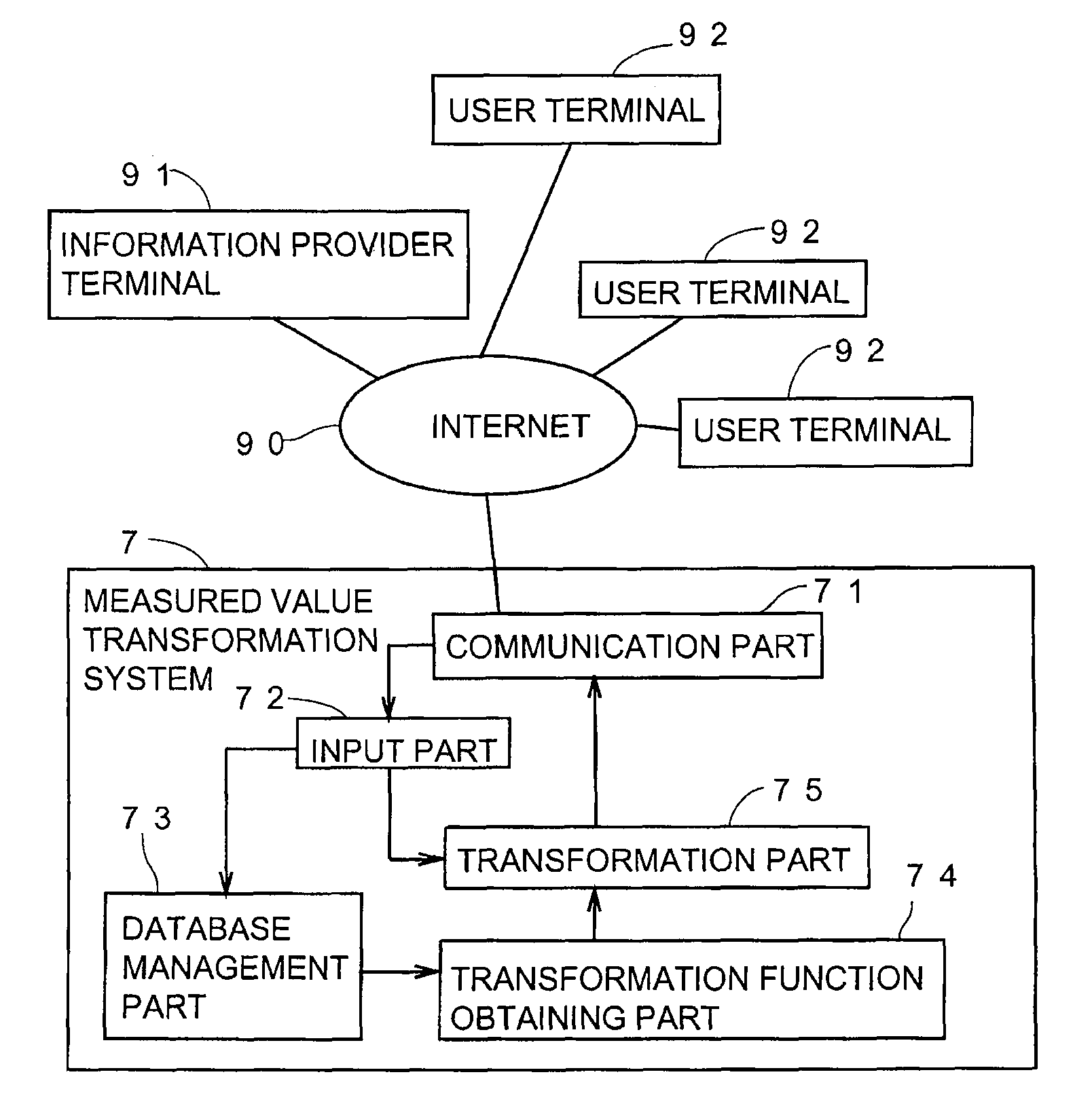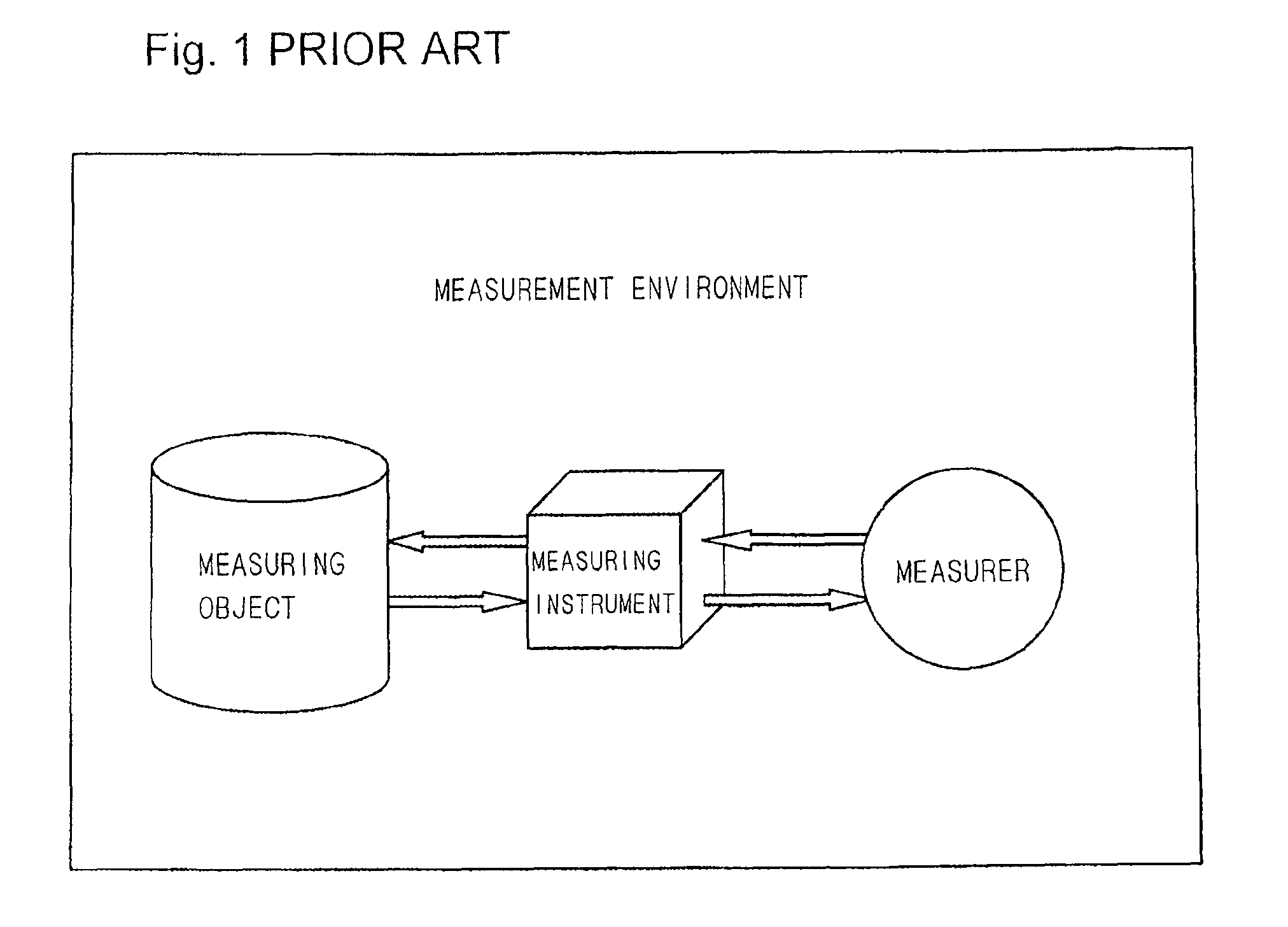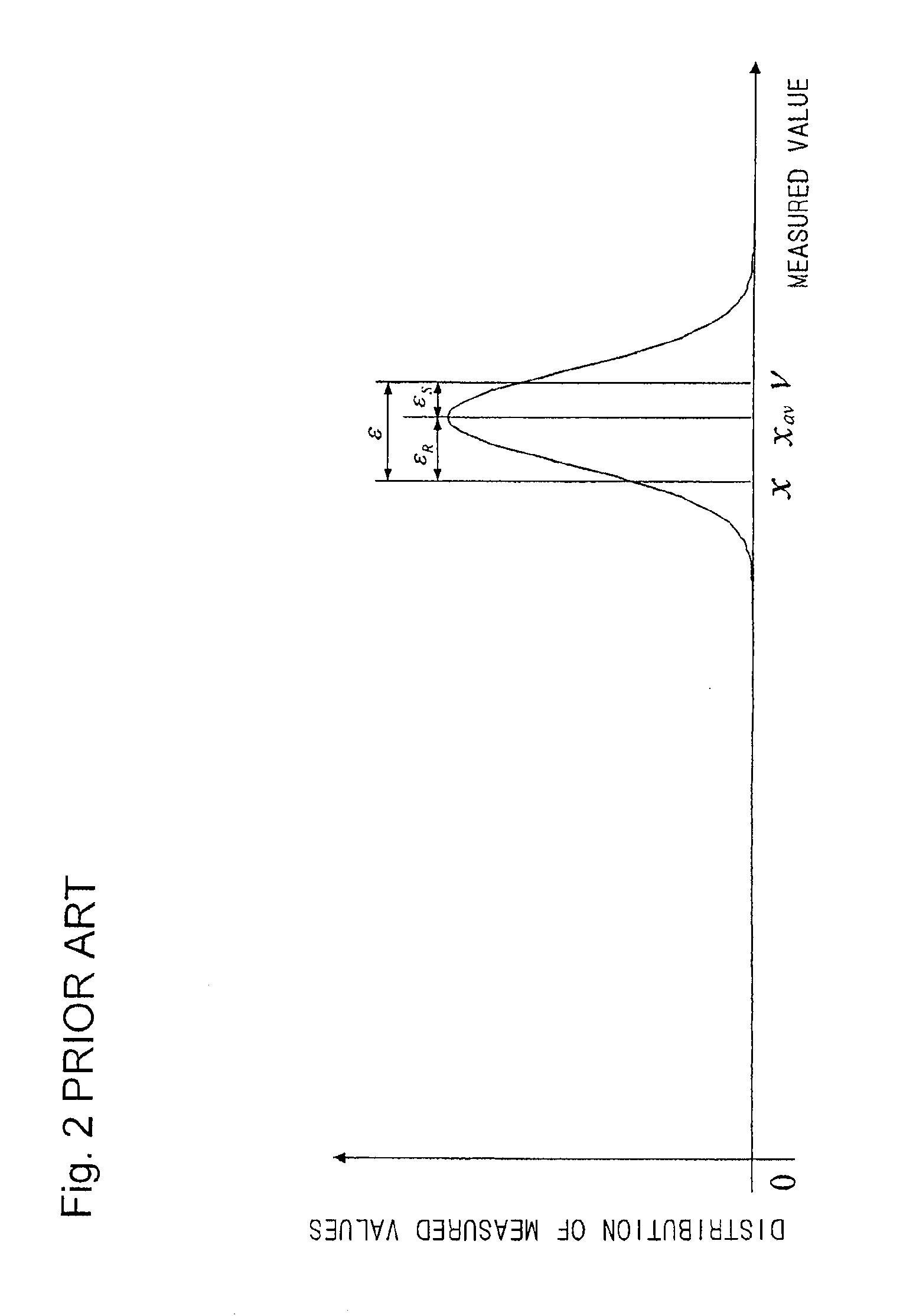Measured value transformation method and measured value transformation system
a technology of measurement value and transformation method, applied in the field of method and system for transformation of measured value, can solve the problems of inability to remove measured values after measurement, uneven measurement values, and errors with these error factors
- Summary
- Abstract
- Description
- Claims
- Application Information
AI Technical Summary
Benefits of technology
Problems solved by technology
Method used
Image
Examples
Embodiment Construction
[0081]Black-Box Model
[0082]“Method of ensuring validity in transformation results of measured values” can be regarded as “general method in transformation of measured values”, and specifically, it can be expressed as “method of ensuring validity in transformation results to function in all the measuring systems, where a special instrument or the like is not needed and systematic errors which derive from all the constituent elements in a measuring system are subjects”.
[0083]The present invention is achieved by information processing mechanism based on an input-output model which is “a novel general method in transformation of measured values”. This general method is called “Black-Box Model”. In FIG. 5, a schematic view of the Black-Box Model is illustrated. The Black-Box Model is an input-output model, and input output ends correspond to measured values and a black box part 2 corresponds to a measuring system. In other words, it is a model considered as “when a true value is inputted...
PUM
 Login to View More
Login to View More Abstract
Description
Claims
Application Information
 Login to View More
Login to View More - R&D
- Intellectual Property
- Life Sciences
- Materials
- Tech Scout
- Unparalleled Data Quality
- Higher Quality Content
- 60% Fewer Hallucinations
Browse by: Latest US Patents, China's latest patents, Technical Efficacy Thesaurus, Application Domain, Technology Topic, Popular Technical Reports.
© 2025 PatSnap. All rights reserved.Legal|Privacy policy|Modern Slavery Act Transparency Statement|Sitemap|About US| Contact US: help@patsnap.com



